Wondering what the best ways to store firewood are? You’re not alone! There is something lovely about cosying up in front of a real fire and many more people are now using traditional open fires or stoves.
With the prices of fuel ever on the increase, a wood burning or multi-fuel stove gives you another option when it comes to saving energy heating your home.
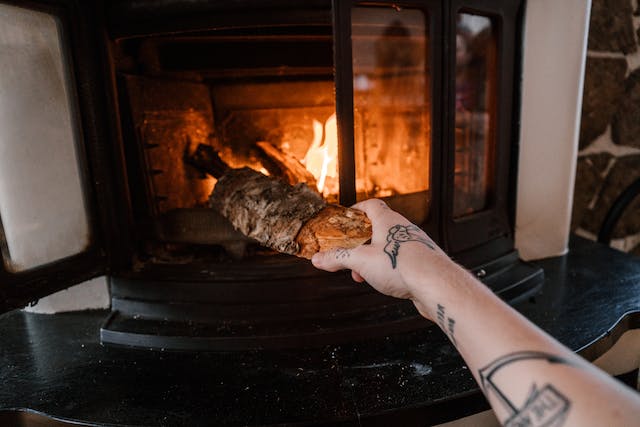
A wood burning stove means you need a plentiful supply of one thing – wood. To burn efficiently and maximise heat output, the wood you burn needs to have had time to dry out, otherwise known as ‘seasoning’.
Protecting your supply of wood is important, so store it correctly to ensure that you always have a source of dry wood available and decent fuel for your fire.
Green and Dry Firewood
Firewood is classed as either ‘dry’ or ‘green’.
Dry wood is more expensive to buy as it has already been through the seasoning process, such as being dried in a kiln. Dry wood burns at a hotter temperature, is more efficient and produces less emissions than burning green wood.
Storing Dry Wood
Dry wood can be stored fully enclosed, either in a woodshed or covered by a tarpaulin.
However, the more ventilation the better because if the storage becomes damp inside, the wood will simply absorb the moisture and it will burn like green wood. That means all the effort you put into covering it up will have been wasted.
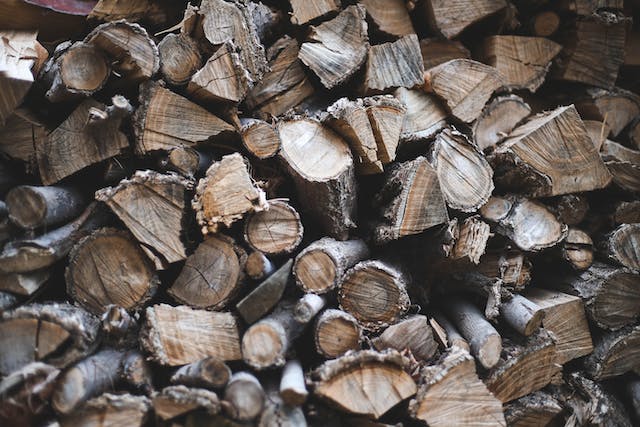
Storing Green Wood
Green wood has either been freshly cut or has fallen off trees, and it still has plenty of moisture and sap within it.
In order for green wood to become dry, it needs to be seasoned properly in order for it to burn well. Wood dries best by being cut into short lengths and left in stacks that are raised off the ground.
According to DEFRA, firewood is ready to burn once it has lost around 80% of its moisture content. Wood that is too wet is not only harder to light, but also gives off excess smoke. It uses more of the fire’s energy to boil off the water, so you get less heat coming from it. You are also effectively adding water to your fire, which as anyone knows, makes for a poor blaze.
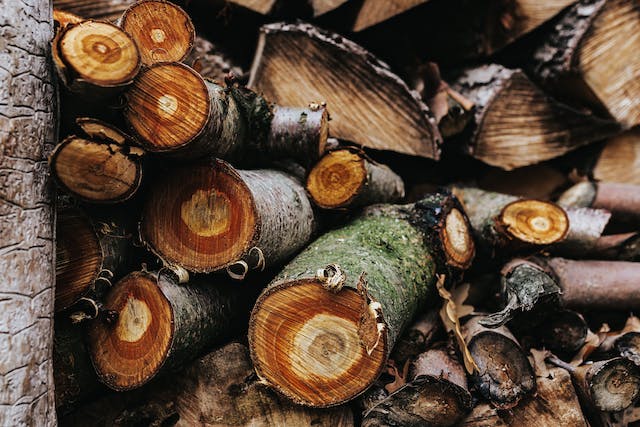
Another thing to consider is that the smoke from green wood also leaves deposits in your chimney, making the need to get it swept more frequently.
To season green wood, it should be left outside and open to the elements so that the air can flow around it, rather than be enclosed. It also needs a roof to keep off the rain.
There are many styles of commercially available log stores, or it easy to build your own. It does not have to be anything elaborate, just a decent roof against the elements is all that is required, and plenty of ventilation. A three sided structure is ideal, with a sloping roof to allow the rain to run off.
TIP: When constructing or placing your log store, try to find a sheltered position outside so that it will not be affected by rain that may come in at an angle. An under cover are such as a carport works well.
How Long Does it Take to Season Wood?
It can take six months to a year to dry out green wood, depending on the time of year. For instance, if you want a good supply of wood over the winter it is best to start the seasoning process early in spring.
If you have any growing wood that needs to be removed, the best time to harvest is before the growing seasons of spring and summer. This helps with the drying process because the sap is low and the wood will naturally have a lower water content. The wood then has the advantage having lower moisture levels and the warmth of the summer months to help speed up the evaporation of moisture.
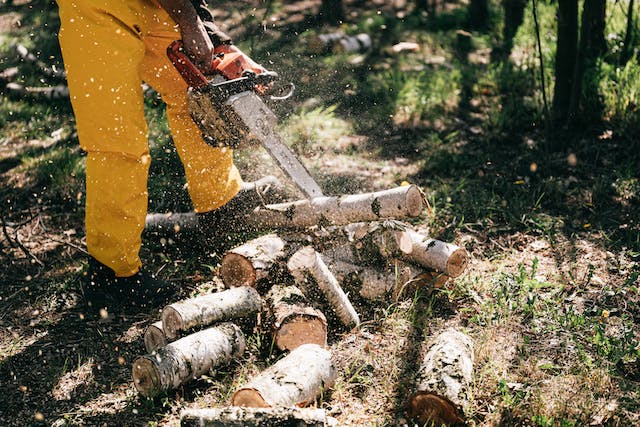
Another way to help season the wood more quickly is to remove any bark that is on the logs. Bark slows down the rate of evaporation, so removing it will help the moisture escape more easily.
If you have wood from different types of trees, the time it takes to season the wood will vary. Softwood, such as Pine, will season more quickly than hardwoods like Alder or Birch.
If you have a mixture of both types, have one side of your wood pile for hardwood and another side for softwood. That way you won’t be constantly putting back wood that is not ready.
How To Tell When Wood is Seasoned
The best way to check whether your firewood has dried out enough is to look at the ends of the logs. As the wood dries, it shrinks and then cracks appear.
How the wood sounds when you tap it is another good indicator whether the wood is dry enough. If you knock two pieces of seasoned wood together, you will hear a crisp, clean sound. Green wood produces a muffled sound when knocked together.
Another indication is that seasoned wood takes on a lighter grey colour, rather than the rich brown colour of unseasoned wood.
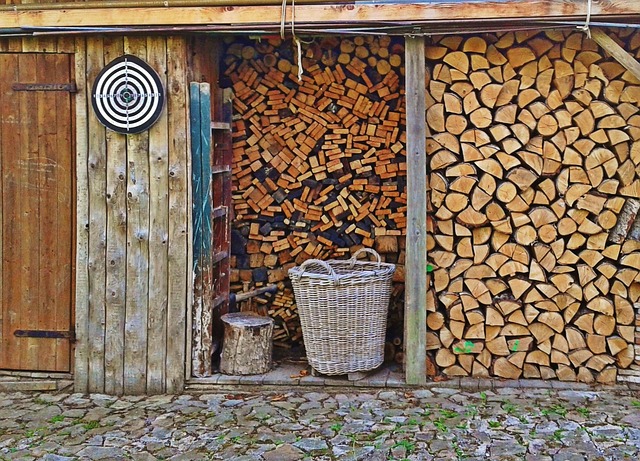
Where to Put Your Wood Store
When choosing a site for your wood store, it makes sense to choose a convenient place near to your house. This makes it easier to fetch the wood and put it inside your home, something that you will be thankful for in winter weather.
It can be quite labour intensive to get wood in from the pile each day, and as logs are heavy, it may require a few trips. A location that is a short distance away is ideal. Not only will it be easier to bring in the wood, another benefit is that any vermin that are attracted to the woodpile will not also be attracted to your home.
Plan ahead and make sure that the area you choose will not restrict any paths or doorways, or that you will not need that area for any another reason.
When you are ready to use your seasoned wood, it is a good idea to bring it into your house for a couple of days before using it. It can be placed near to your fire or wood burning stove. The extra warmth from the fire will give the wood time to dry out further, making it a more effective source of heat.
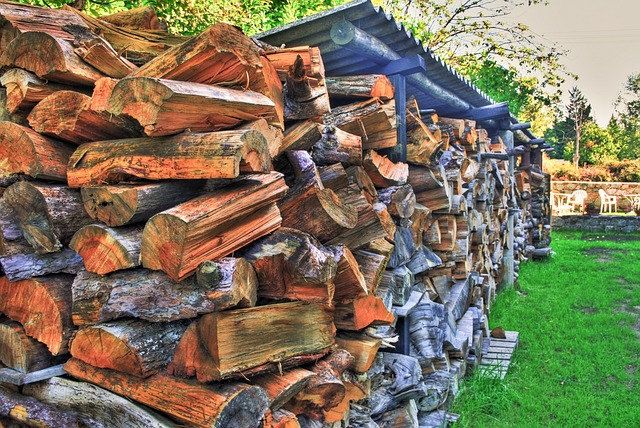
Tips for Stacking and Storing Wood
Ideally, the best ways to store firewood is in an open kind of structure such as a lean-to or three-sided shelter.
Wood needs good ventilation to age and to stay dry, yet needs a roof to prevent the rain or snow from soaking it. An easy way to store green wood is to cover the top of the stack with tarpaulin while the sides are left open to allow the air to flow around the stack.
Here’s some tips for stacking firewood:
- Splitting the wood into small lengths makes it dry out more quickly than any larger logs that are in the stack.
- Rounds of wood are slower to dry out than short logs, so split rounds where possible.
- Don’t stack firewood next to the outer walls of buildings. If the pile catches fire it could damage your property.
- Stacking wood works best on level ground, as the rows of wood will be sturdier. As you build your stack, it may be necessary to put a couple of logs on at differing angles here and there, to keep the stack sturdy.
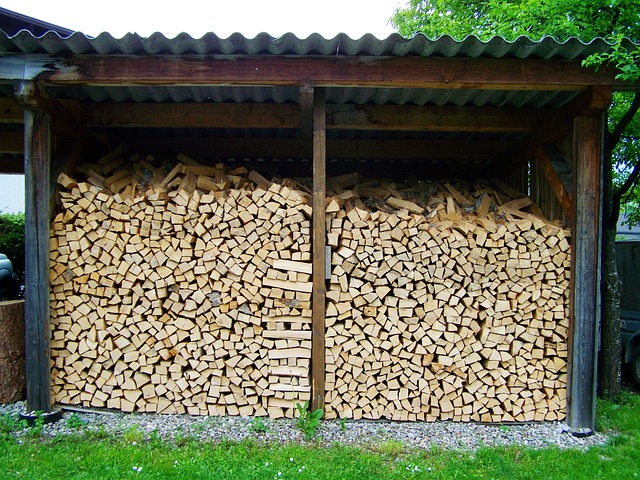
- Choose a sunny place to put your log store, as it will help the wood will dry out more quickly. The warmth from the sun will speed up the evaporation of moisture. If you have place in your garden that is exposed to the wind, this also makes an ideal place to store firewood because there will be lots of air circulating around, helping to season the wood.
- If you use a tarpaulin to cover your woodpile, remove it on dry days to help the moisture evaporate.
- Stack the wood no higher than 4ft. Taller stacks will be more unsteady and likely to fall over. As the wood dries, it will shrink so it is important to make sure each piece is securely placed in the pile to allow for some movement.
- Stack on top of an old pallet or something similar to prevent the moisture from the ground from affecting the wood. Tarpaulin or good draining gravel is also suitable. Placing the first layer of wood bark side down will help keep the moisture from the ground away from the stack.
- Keep a gap of a few inches around the edges of the stacks and also between the stacks and the walls to keep a good air flow. Loosely stack the wood.

- If the firewood is in contact with the ground, it will be exposed to the moisture and will begin to rot. A little mould on your wood pile is common, but burning larger amounts of mouldy wood can have an effect on health. Mouldy wood smoke can cause irritated eyes, runny noses and making conditions such as asthma have worse symptoms. The airborne mould spores can then settle in other areas of your home.
- Wood stacks should be close enough together to stop pets or children from climbing between. Not only does it only make the pile safe, it saves you the time and hassle of re-stacking the wood if it falls over.
- Organise your woodpile so you know exactly where to find both larger and smaller pieces of wood. To start your fire, you will need both logs, smaller lengths of wood and kindling. It will save you time and be easier if you do not have to rummage through the pile to find the wood you need.
- Rotating the wood and burning the oldest wood in the stack first will keep the stack moving and discourage pests from settling in.
Woodpile Structures
There is a certain art to stacking firewood. There are a few different methods of doing so, and the one you choose will depend on the storage space that you have available.
One of the simplest ways to store firewood is to arrange the pieces with a vertical stop at the ends. This secures the wood pile and prevents it from falling over the sides. The stop can be a piece of board, the side of a storage structure or you can place vertical lengths together and secure them.
The round woodpile is a more compact method of storing wood. Pieces of wood are placed so that all the ends meet in the centre to produce a circle. While this may save on space, the disadvantage is that it increases the time it takes for the wood to dry.
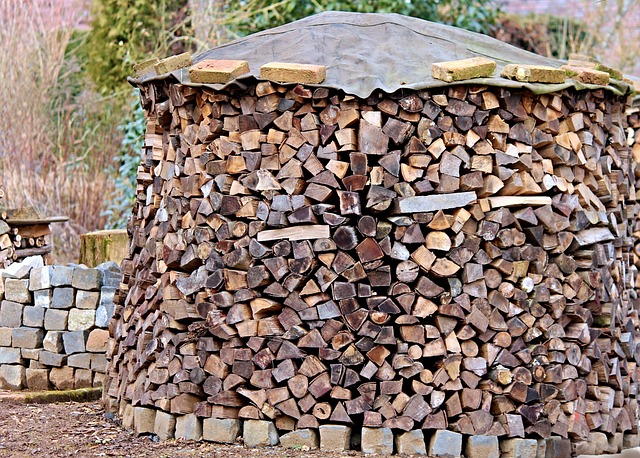
A criss-cross pattern of layering wood is also an effective method of seasoning. The alternating layers that are placed in opposite directions allow the air to flow freely and make the drying process quicker.
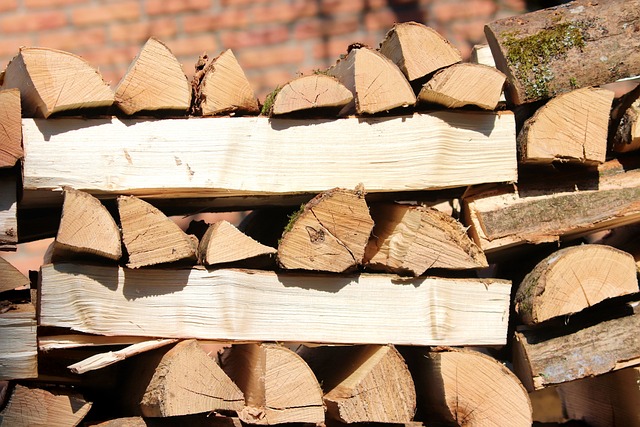
The principles of storing firewood are simple to master. Once you have the routine of properly stacking and sheltering the wood from wet conditions, you will get much pleasure from your wood burning fire and also from maintaining your woodpile.
If you have the space, try to create a rotating system whereby you burn your dry wood from one pile, while another pile is in the process of drying. This ensures a good supply of seasoned wood throughout the year.
